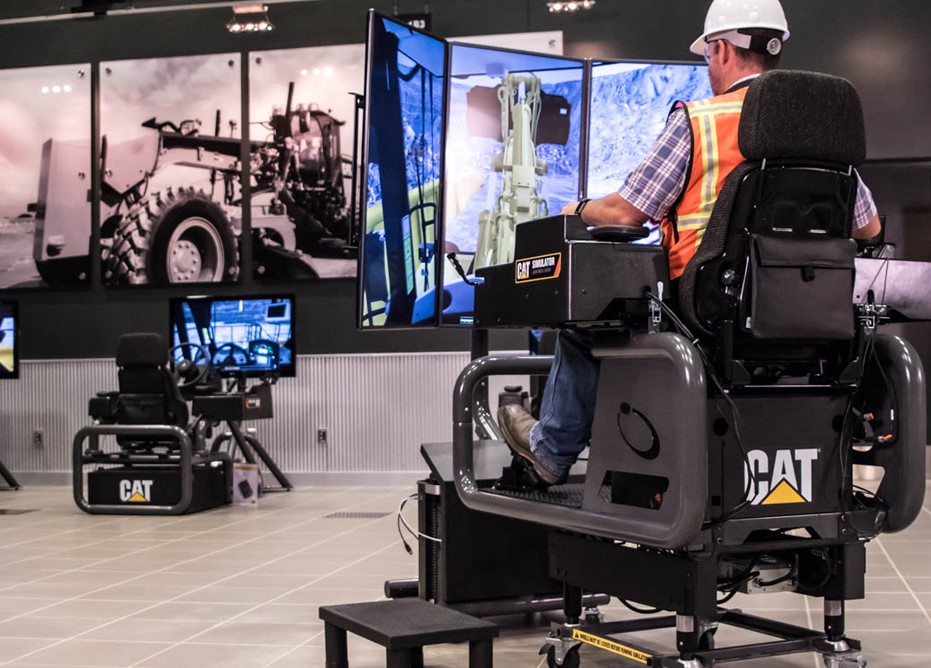What Is Professional Simulation Training?
Professional simulation training uses haptic technology to mimic real-world conditions with incredible precision. Think of it like this: haptics engage your sense of touch to communicate with you through physical feedback. When you hold down an app on your smartphone, that vibration you feel tells you your phone is ready to move that app around. That’s haptics.
In terms of simulation training, these same haptics in professionally designed rigs and chairs allow trainees to feel physical sensations that would occur in the real world–such as the vibration of heavy machinery on a construction site, the turbulence experienced by a pilot mid-flight, or the intensity of moving through hazardous environments as an emergency responder. Pair these moving seats with high-tech virtual reality visuals, and your employees will be transported into an ultra-realistic training environment.
When trainees are placed in these lifelike scenarios, this gives them a chance to practice critical decision-making skills under pressure. The result? Workers who can react quickly and efficiently without risking lives or equipment damage while training.
How Simulation Training Cuts Company Costs
To put it simply, investing in simulation training can save your company a lot of money. Plus, many sectors are already using this training method, from aviation and rail to construction and military defense. Here’s how:
- Reduced need for equipment and resources. In industries like aviation or construction, using real machinery for training can be very expensive when you think about the cost of running your equipment. For example, large aircrafts can cost about $10,000 an hour just to run. Not to mention the added revenue cut you experienced from taking it away from actual projects that day. But when you add simulation training into the mix, it eliminates these costs by providing a totally separate environment that mimics your same real-world scenarios without the need for your physical assets.
- Saves supervisor’s time. Most of the time, your supervisors have much higher salaries than trainees and other team members. So whenever you can reduce the amount of time your management team spends overseeing traditional, hands-on training sessions, you’ll almost always see money saved on the backend. With simulation training, trainees can practice independently in realistic environments. This minimizes the need for constant supervision. Then, your supervisors can focus on other lucrative tasks that boost productivity.
- Damages are “fake”. Repair costs from damaging heavy machinery can range anywhere from a few thousand to tens of thousands of dollars, depending on the equipment and industry. And trainees often increase the risk of damage. Plus, damages don’t just stop at equipment costs, either. You might also have to pay for damages to other property or injuries, too. Simulation training offers a 100% risk-free alternative. You can start reducing these costly errors and liability issues while still training your team effectively.
- Trainings are reusable and scalable. Once a simulation training program is developed, it can be used repeatedly for your entire team without additional costs. Trainees can turn it on and immediately start. On the other hand, traditional real-life training usually requires getting together resources, reserving locations, and hiring trainers every time a session is conducted.
- Faster training cycles. When you take away all the training prep and setup, simulators allow for faster learning cycles overall. This means less time spent on training and more time for your employees to get out on the real job and be productive–saving the company money in the long run.

The Future of Professional Simulation Training
The future of professional simulation training is rapidly evolving. Advanced simulation systems like D-BOX have decades of simulation engineering experience and are now easier than ever to implement. Essentially, it’s a plug-and-go system for your team.
You’ve got enough on your plate running a business. Why not streamline your training process and save more time and money? Upgrade to modern simulation training and focus on what really matters–moving your company forward.




